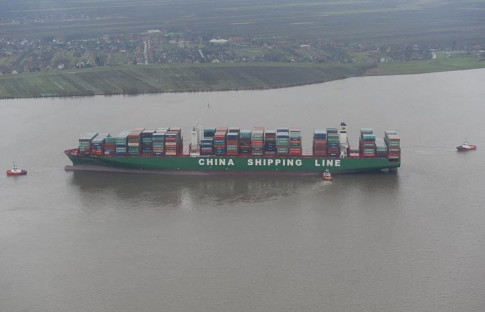– World’s Biggest Containership “Hard Aground” As Baltic Dry Crashes Below 300 For First Time Ever:
Before this year the lowest level The Baltic Dry Index had reached was 556 in August of 1986 and the highest was in June 2008 at a stunning 11,612. Today saw the freight index hit a new milestone however, crashing through the 300 barrier for the first time ever – at 298, this is almost 50% below the previous record low.
Commodities obviously are saying something very different from “the market”…
And as Dana Lyons notes, of course much of the input into the BDI comes from the price of raw materials. Considering the deflationary spiral in commodities, the drop in the BDI to all-time lows shouldn’t be a shock.
However, the depths that the index is now plumbing is quite alarming and suggests trouble in the global trade picture.
It would also suggest perhaps that the deflationary pressure is not just a supply issue. Consider every prior drop in the Baltic Dry Index down to the 500-600 level. Each time, the index immediately jumped as if latent demand was just waiting for those lower prices. That development has not yet occurred this time around, even as prices are reaching 45% below the previous record low.
The Baltic Dry Index has become a trendy thing to mention in recent years when discussing global market and economic conditions. The truth is, nobody really ever knows for sure what the broader message is behind the index’s behavior. That said, this recent plunge is making it quite difficult to conceive that it means anything positive in terms of the global economy and deflationary pressures.
And finally it’s not just commodities and the Baltic Dry that stalled, as gCaptain reports, one of the world’s biggest containerships is hard aground in Germany’s Elbe River leading to the port of Hamburg.
The vessel CSCL Indian Ocean ran aground Wednesday night following an apparent mechanical failure.
An attempt to refloat the ship at around noon local time was unsuccessful.
Germany’s Central Command for Maritime Emergencies (CCME) says it has been in touch with the ship owner and they are in the process of developing a salvage plan. A second attempt to refloat the ship is expected during high tide Thursday night.
An overflight of the area Thursday showed no signs of pollution. There were no injuries reported.
The Hong Kong-flagged ultra large container vessel (ULCV) CSCL Indian Ocean measures 399.6 meters long by 58.6 meters wide. The vessel belongs to China Shipping Container Lines, part of China Shipping Group. It is one of 5 CSCL ships with the capacity to carry a staggering 19,100 twenty foot containers.
The incident has caused minor impacts to ship traffic on the Elbe River.
CSCL Indian Ocean is part of a new breed of giant containerships designed to carry more than 18,000 TEUs and used to transport goods from Asia to northern Europe.
* * *
Quite an anology!!


